

ICCA
Plastic Additives
Database
Improving transparency and supporting sound management of additives
Additives Play an Important Role
They provide many important benefits to plastics and can help us move towards a more sustainable future. Additives can extend the life of a wind turbine that is regularly exposed to the elements, increase the effectiveness of packaging to protect food from spoiling, save energy by lightweighting products, strengthen and increase the flexibility of medical products for use in healthcare environments and increase the durability of numerous products so they last longer and can be reused.
The International Council of Chemical Associations (ICCA) understands there are questions and concerns about additives in plastics. To help answer those questions and provide greater transparency, ICCA has developed a Plastic Additives Database that builds upon the UN Environment Programme’s Chemicals in Plastics Technical Report.
In many parts of the world, there are strong regulatory frameworks in place for chemicals, including chemical additives in plastics. ICCA’s Plastic Additives Database will leverage the extensive information and resources from those systems, bolster that material with data from additive manufacturers, and publicly share the contents in a user-friendly format. The information will include:
- The identification, use and function of additives that are currently in commerce or that have been in commerce for the past 10 years.
- Available hazard classifications of an additive.
- Reference/citation to existing chemical management laws regulating specific additives.
This overview is intended to provide more information about the database and the information it contains. Subsequent versions of the database will have more data components, and changes may occur to improve the database’s functionality, utility, and user experience.
Searching for an Additive
A user of the additives database will be able to search for additives with the following parameters:
- CAS Registry Numbers®
- Chemical name
- InChiKey (International Chemical Identifier)
- Additive function (e.g., UV stabilizer, heat stabilizer, etc.)
- Industrial sectors using additives (e.g., automotive, food packaging)
- Polymer type
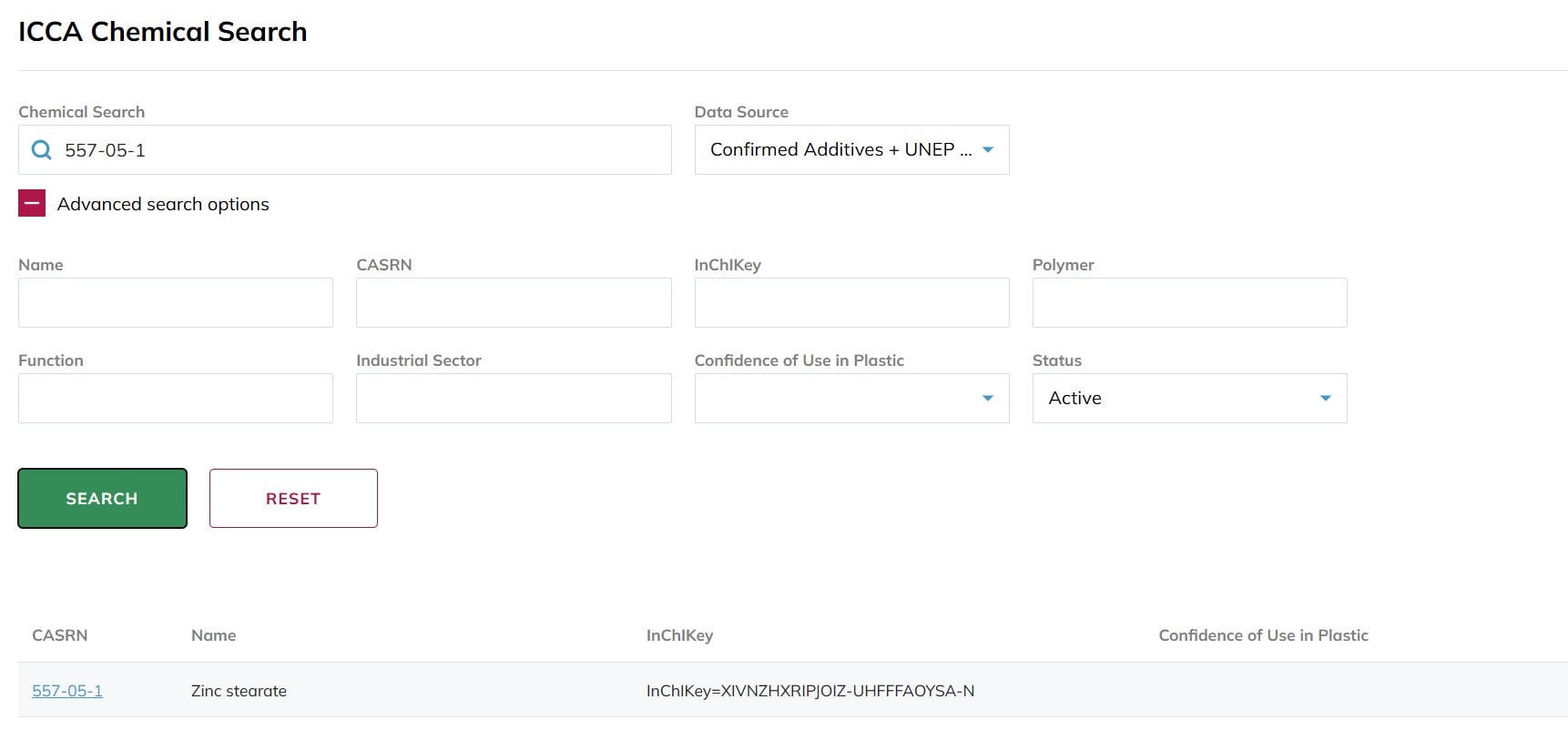
Additive Search Results
The database will have multiple outputs that convey a significant amount of information on specific chemical additives, see the examples below:
Additive Overview
- Data sources: industry survey data, SpecialChem, PLASI, UNEP Chemicals in Plastics Technical Report
- Function(s) of additive
- Sector(s) and application(s) additive is used for.
- Polymer(s) additive is used in

Additive Chemical Identity
- Name and preferred name
- Molecular formula
- Unique identifiers (e.g., CAS No., InChI Key)
- Verification by manufacturers of additive use in commerce
- Deleted CAS Numbers
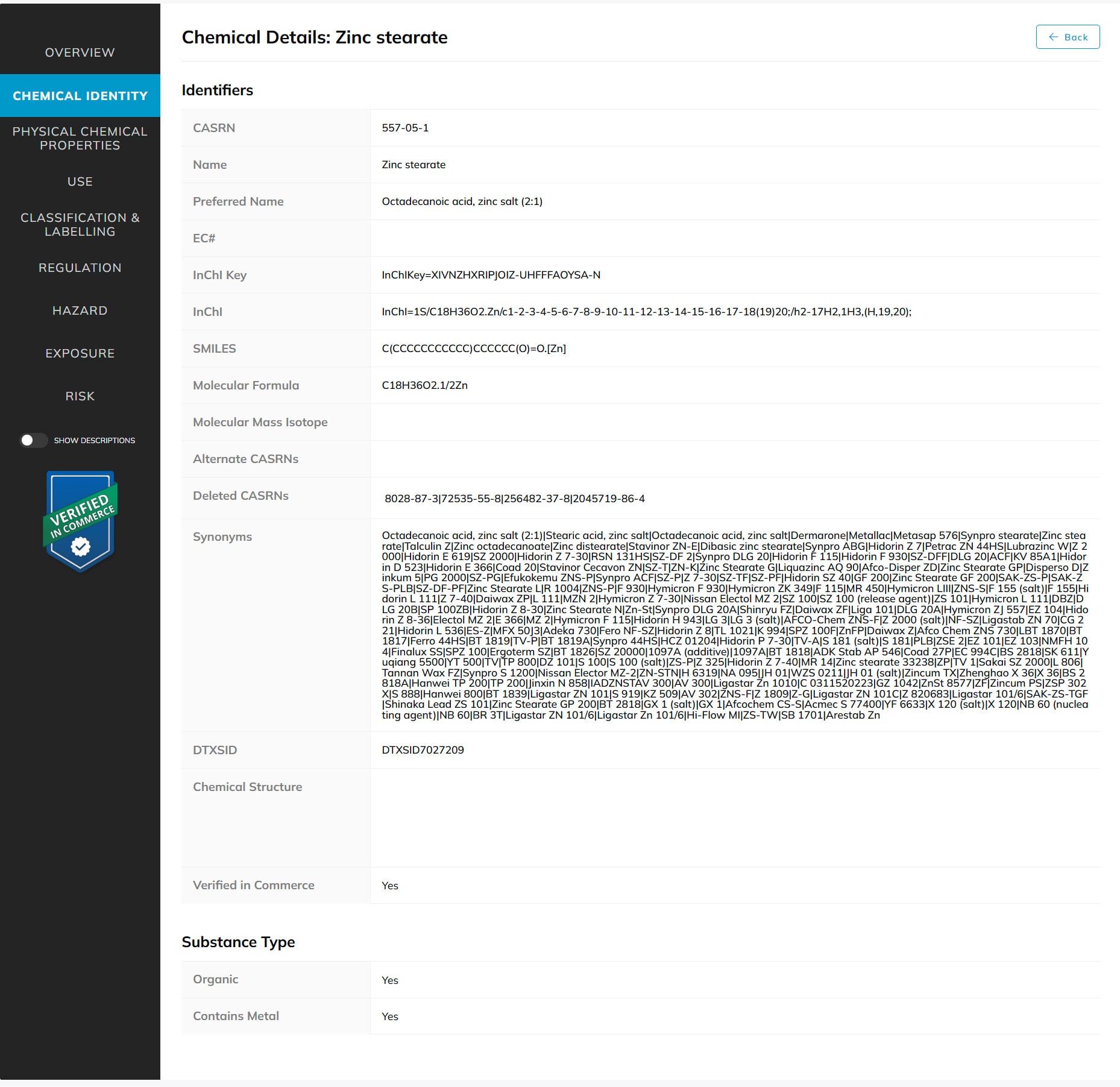
Additive Physical Chemical Properties
- This page contains significant information on an additive’s physical and chemical properties, some examples of the properties contained on this page include:
- Melting, boiling and flash points
- Water solubility
- Vapor pressure
- Density
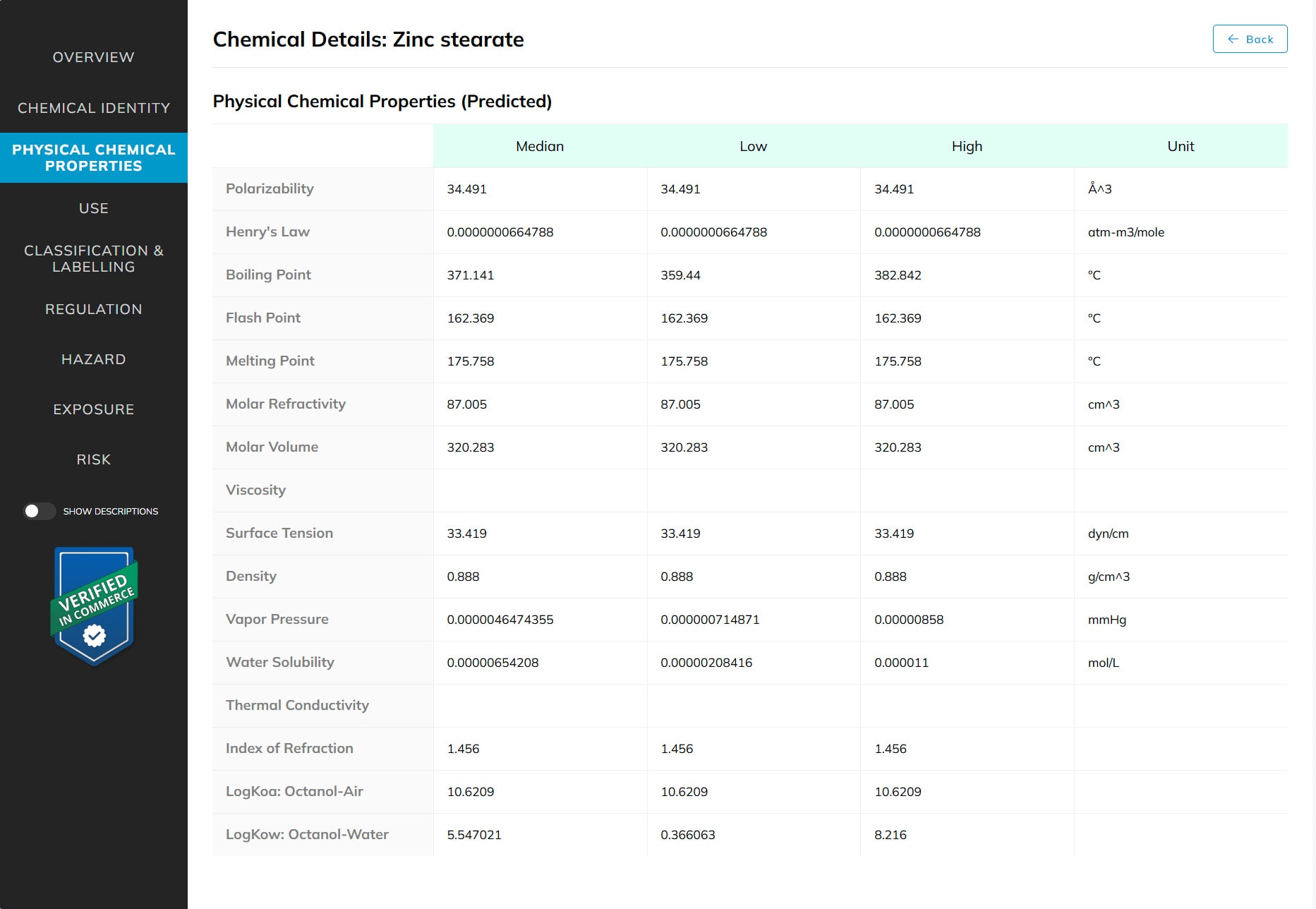
Additive Use Information:
The Use tab provides additional information about an additive’s use in commerce. It specifies whether the use information has been identified by industry survey data and/or UNEP data. It includes:
- Function of substance
- Polymer type additive has been reported in
- Industrial sector(s) using additive
- Regions / countries where substance is registered / notified
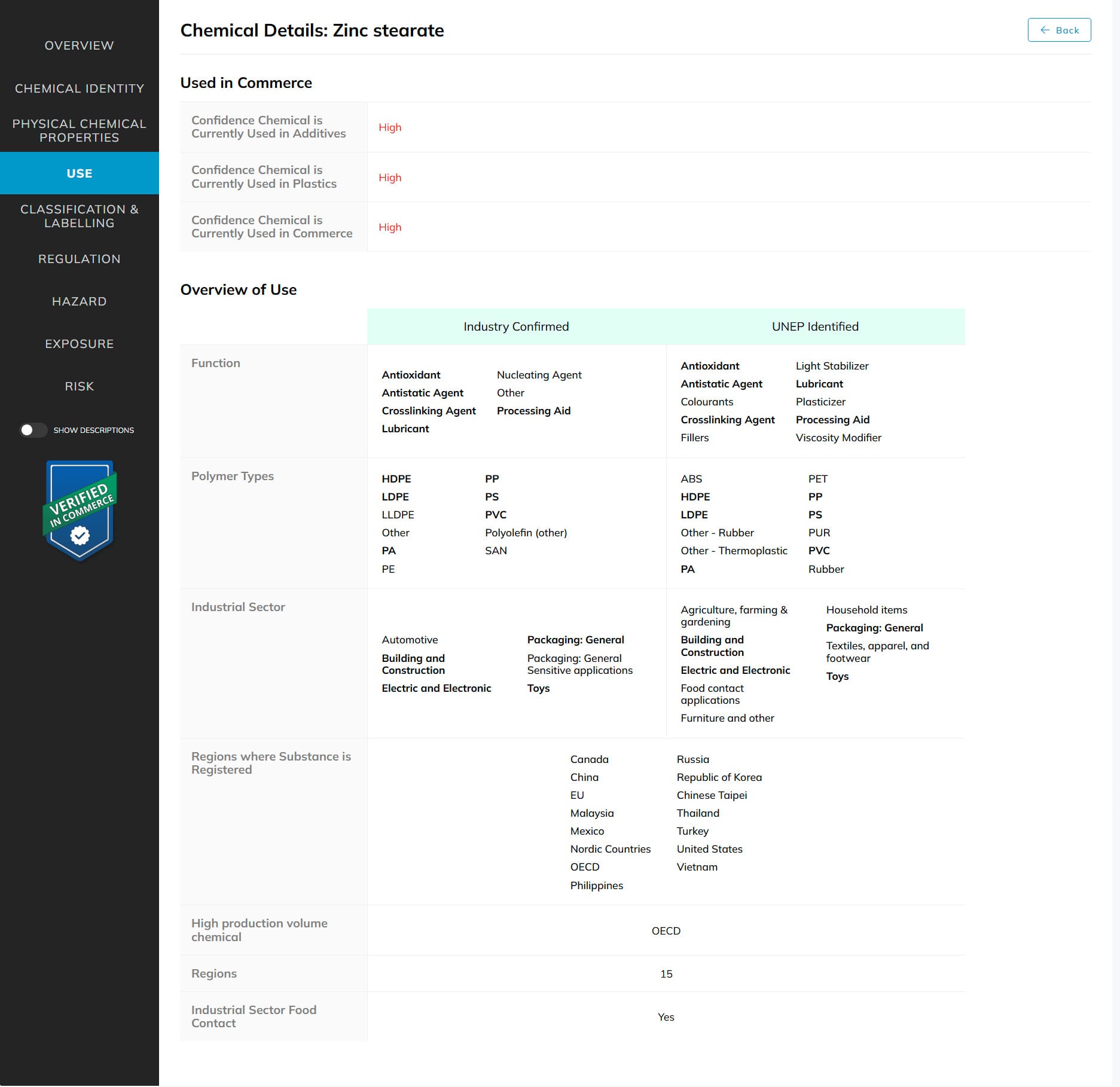
Classification and Labeling
Here a summary of a chemical’s hazard properties is listed based on the Globally Harmonized System of Classification & Labelling of Chemicals (GHS). It includes information as to whether an additive is classified as:
- Carcinogenic, Mutagenic, and/or Reprotoxic
- Toxic in aquatic environments and/or toxic to specific organs with repeat exposure (STOT-RE)
- Respiratory and/or skin sensitizer
- Other classifications
The database also provides the harmonized classification and labelling requirements from EU’s CLP Annex VI (where applicable), and has the GHS and regional classifications as reported in the UNEP Chemicals in Plastics report
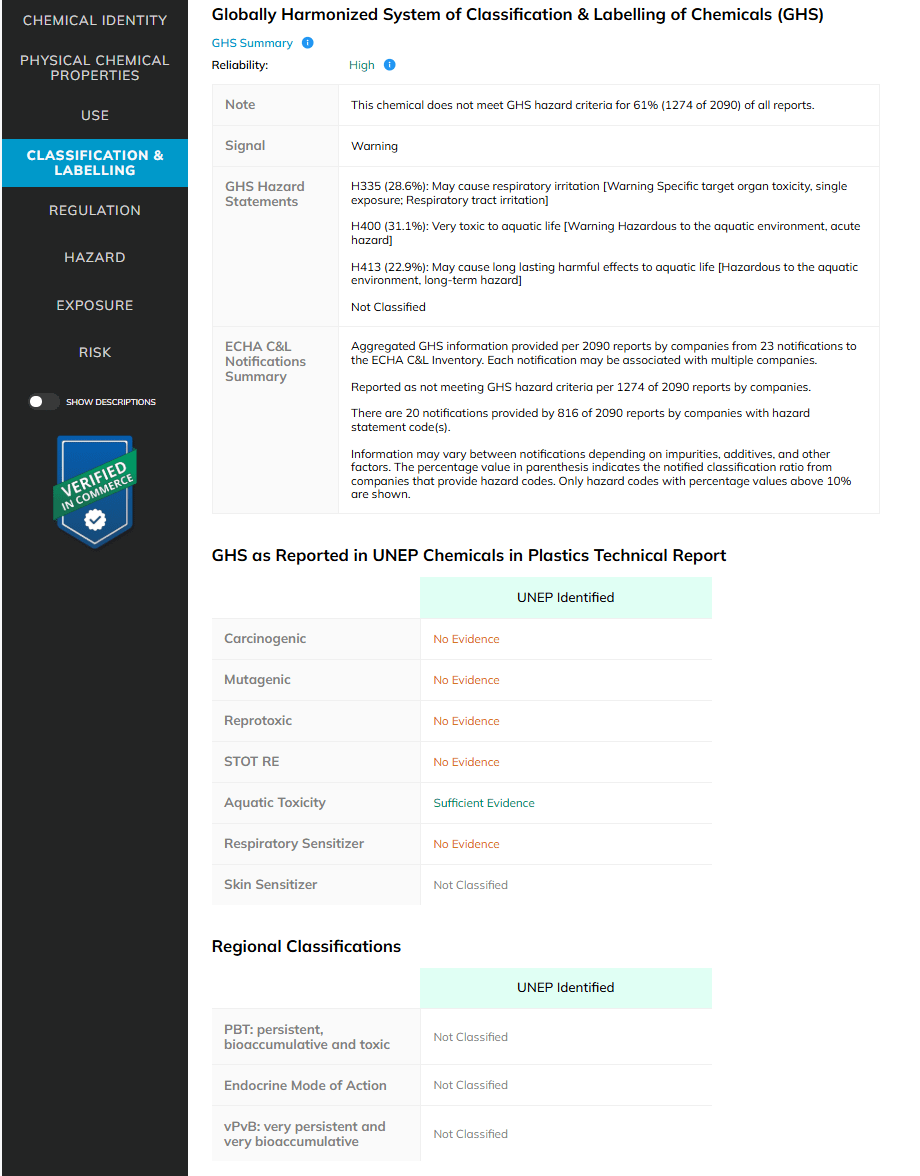
Regulatory Information of Chemical
- Regulatory status of additive by existing chemical management programs/laws across the globe

Hazard
The Hazard tab contains the predicted environmental fate and transport of an additive. Ecotoxicity and Mammalian Toxicity will be available in subsequent versions of the database.
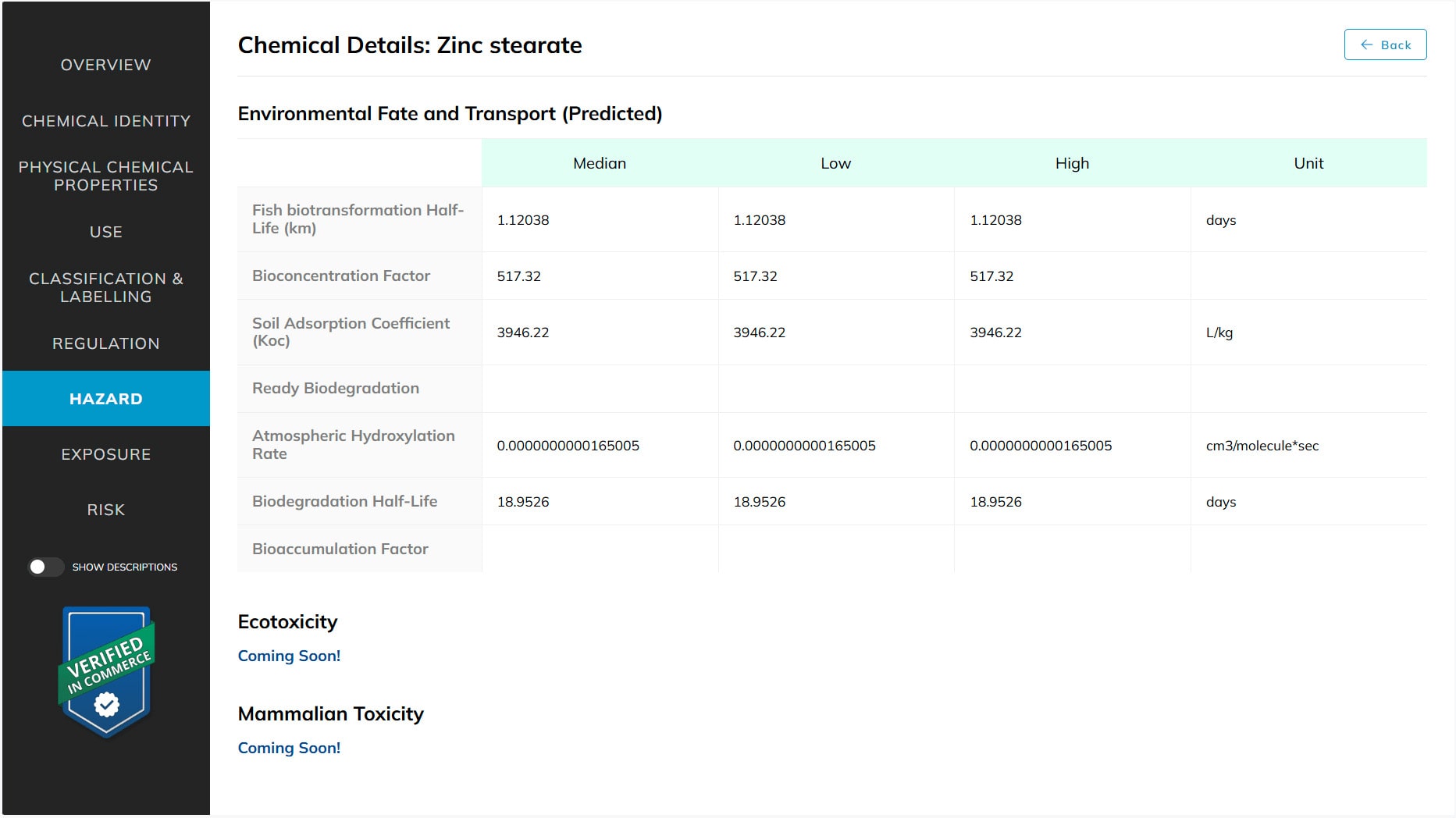
Assessments
The Assessments tab links to hazard and risk assessments conducted by authoritative intergovernmental
and governmental bodies, enabling users to access available hazard and risk assessments conducted
across the globe.
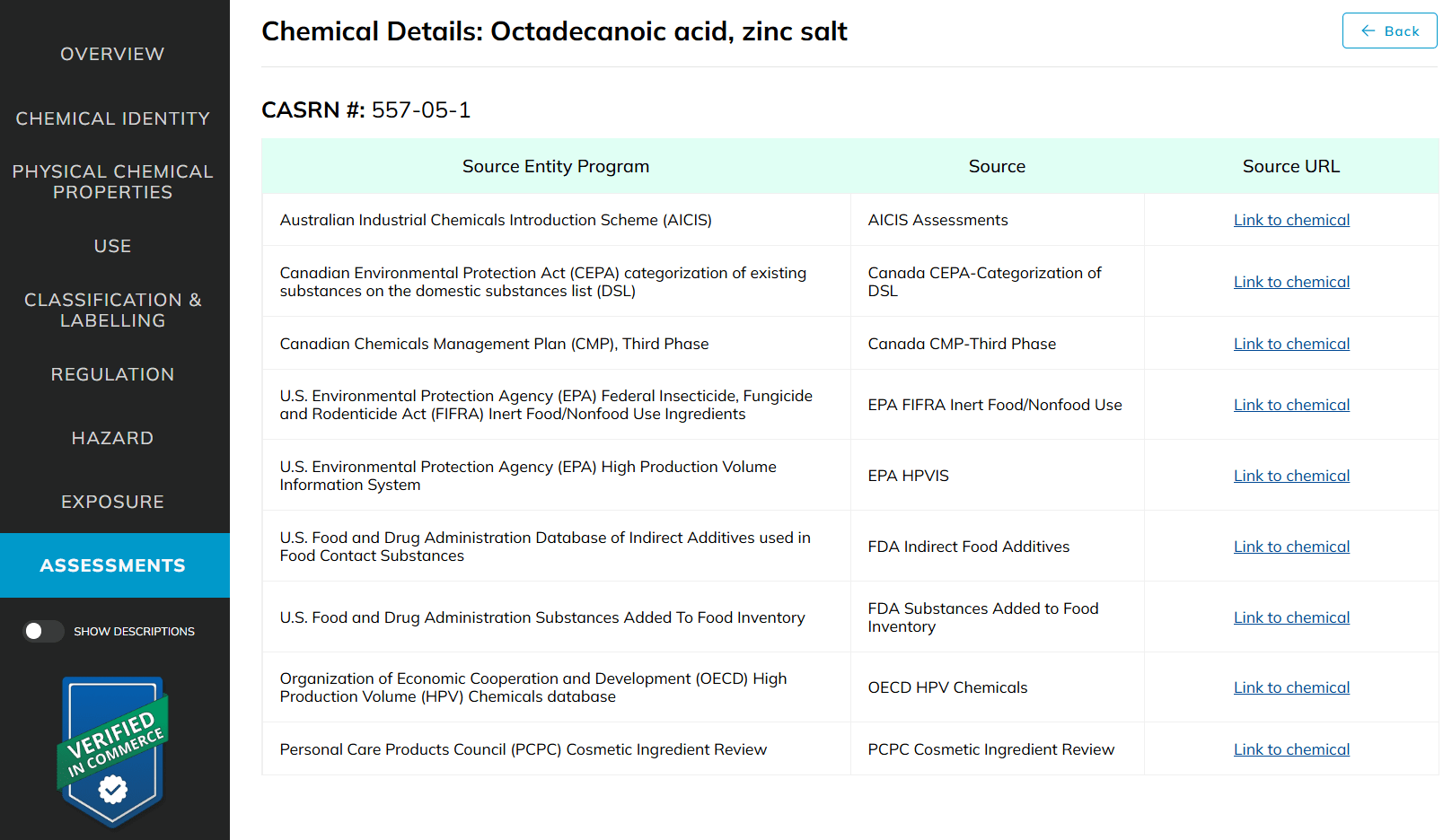
ICCA’s Plastic Additives Database will be regularly updated, with future versions envisioned to contain:
- Exposure information to allow a user to assess potential use-additive combinations.
- A fit-for-purpose risk assessment tool to enhance informed decision-making by users across the value chain including recyclers and regulators.
- The tool will leverage the Framework for Risk Assessment of Plastic Additives in Complex Scenarios being developed by ECETOC Plastic Additives Task Force.
Watch a video tour of ICCA’s Plastic Additives Database
Check out the quick preview here:
Governments, regulators, academia and other relevant stakeholders may register to access the database at iccadatabase.com.
